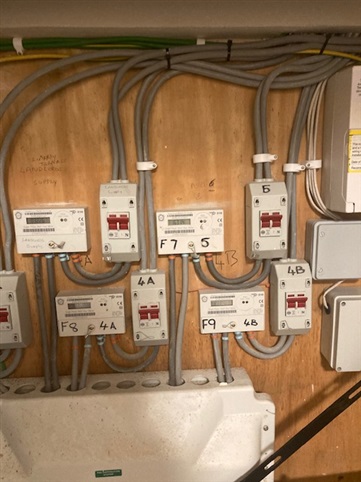Hi guys
Found this on an EICR today. Serves 4 flats. Massive holes in the top where the tails enter followed by main switches then very long runs in standard meter tails to each flat. Is this the landlords responsibility or the supply company or parts each. All in a locked cupboard in communal area with the key hooked at the top of the door for anyone to access
.

Cheers Gary


